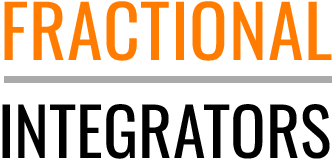The dynamic between Visionary and Integrator is critical to a successful Implementation. As part of launching Fractional Integrator Alliance in 2020, I researched the role by inviting all the North American EOS Implementers to connect with me through LinkedIn, in order to introduce myself, learn about their practices, and get advice about how the best Integrators help Visionaries get what they want from their businesses.
I connected with 239 Implementers and Integrators, and had 124 Implementer and Integrator first conversations. I have since had dozens of second and third conversations, and have been referred to businesses by multiple Implementers.
Where appropriate, I asked the same two questions of everybody:
- As a new Fractional Integrator, what mistakes will I make that you don’t want me to?
- As an Implementer who has worked with Integrators, what are some of the best practices you want me to follow?
The four lessons below represent the top 4 ways Integrators help Visionaries
Lesson 1: Run the Playbook.
Regarding the process, there was consensus that sticking to the playbook was fundamental, however some Implementers were very strict about purity, while others were saw the process as more fluid, and individualized. One Implementer said that the process would fix issues and to just be patient, and others said don’t give them solutions. However, many others said that the role of Integrator was that of a player-coach, and being involved and influencing the process was required.
The lesson I learned was the objectives Transparency, Accountability, and Health were best served by running the playbook. But to be adaptable to the situation, and don’t let the process get in the way of the purpose. My experience to date has been that each assignment has been unique, and while Implementers are teachers, Integrators adapt the teaching to the situation, and make adjustments on the fly as required.
Lesson 2: It always comes down to RPRS.
The Accountability Chart was seen as the central opportunity/risk for a successful implementation. One Implementer said every issue was RPRS, while most others acknowledged the Accountability Chart was the most difficult part of the Implementation, in terms of getting everyone to manage to it. Getting the Accountability Chart right was seen as a continuing process, and evolves with the growth of the Leadership Team’s maturity.
The lesson I learned was getting clarity of what the organization needs, as defined by the Accountability Chart, determines the success of the implementation, more than any other aspect. What I’ve seen since is that while the seats can usually be well defined, admitting where people don’t fit, and being prepared to do something about it, is a lot messier than most people are willing to admit.
Lesson 3: Visionary relationships are not one-size-fits-all.
The relationship between the Visionary and the Integrator was the area with the widest variance of opinions. On the one end, some Implementers felt that controlling the Visionary, or managing the Visionary because they need to be accountable to someone, or getting the Visionary to stand down and let the Integrator do their job seemed very parochial and directive. At the other end, letting the Visionary fly (they don’t need your control, they need your support), and helping them get to the next level, felt much more aspirational and supportive.
The lesson I learned was that each Visionary relationship needs to be built on how the Integrator can support the unique talents of the Visionary, and to fill-in for what the Visionary doesn’t do well. The key is being able to identify those gaps, getting concurrence from the Visionary that they would value that Integrator role, and being able to convince them that giving up something will get them something far more in return.
Lesson 4: Day to Day Leadership is where Integrators provide value.
The key area for me was how Implementers saw the Integrator, and the advice for me to be successful. The theme that resonated for me was the role of leader and enabler:
- Bring people together and help
- Gently lead people to conclusion, but don’t be so pointed
- Invest emotional capital in the Trusted Advisor role
- Build capability, not dependancy
- Set the standard for accountability in the organization
- Help them see a safe place to be open and address the issues
- Can’t sell, can’t push them; they have to solve it
- Be the magic glue in the organization.
The lesson I learned was while the Implementer was the teacher of the process, what goes on between sessions is vital to keeping the process on track. Bringing it to life is where it succeeds or fails. For me, it simply reinforced my in-going hypothesis: the difference between a successful implementation and a limping along, not quite as good as it could be implementation, is the ability of the Integrator to actively work within the organization, breaking down barriers, staying true to the purpose, and being the keeper of the flame.
Thanks
Rick
